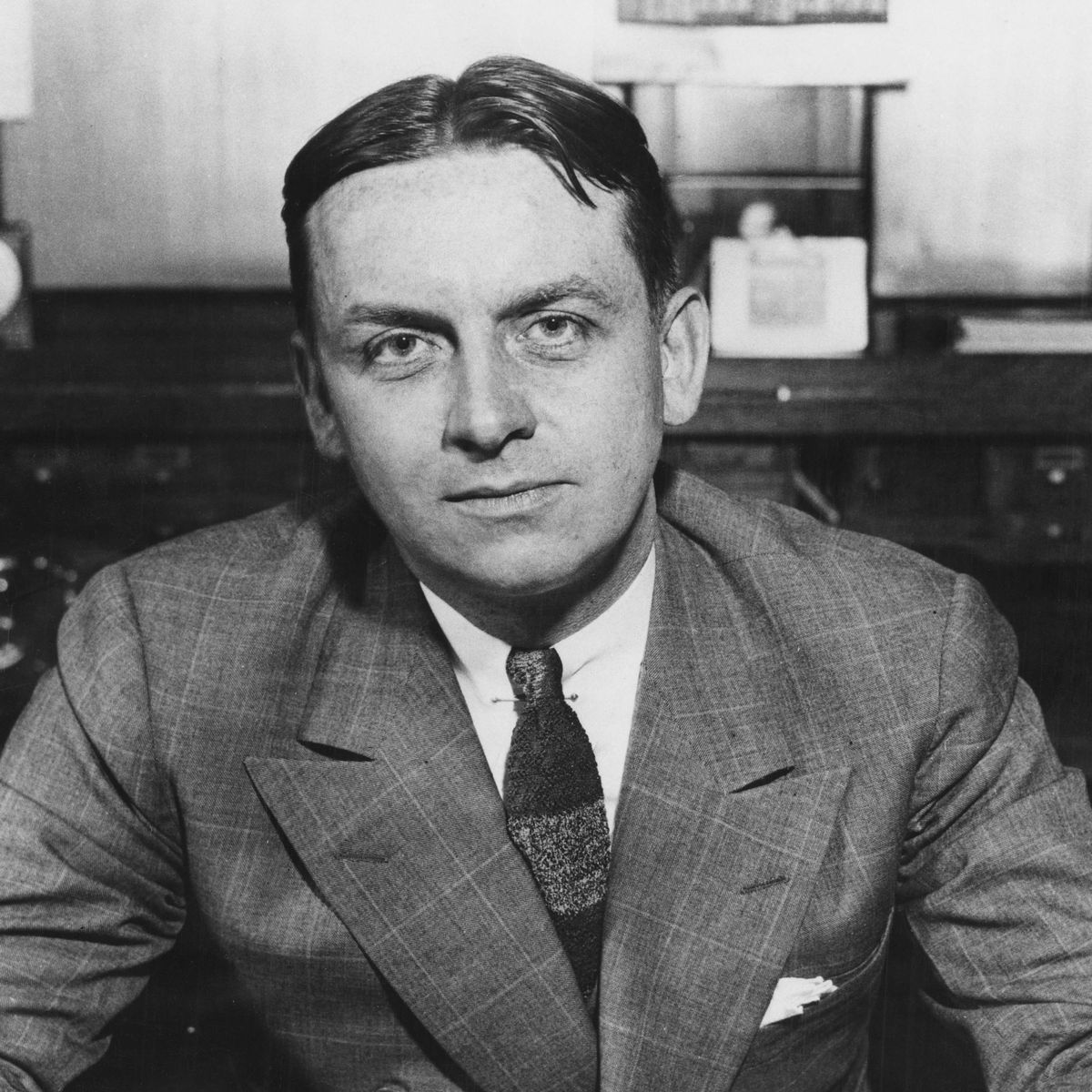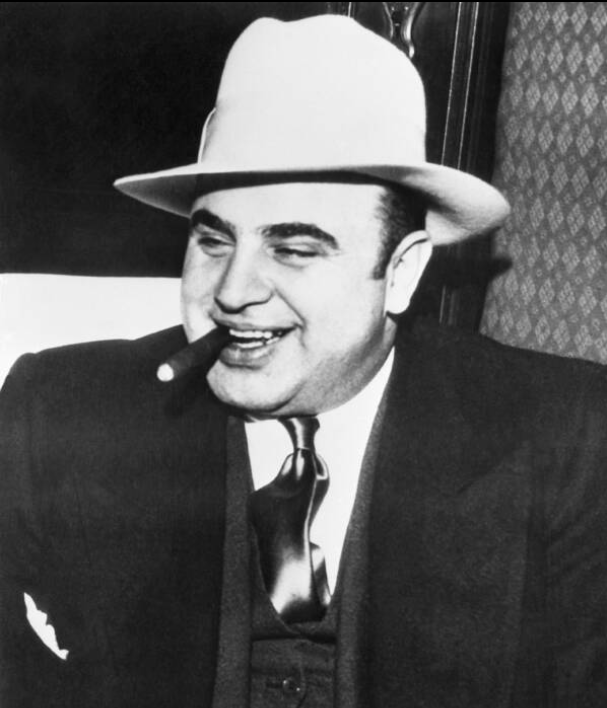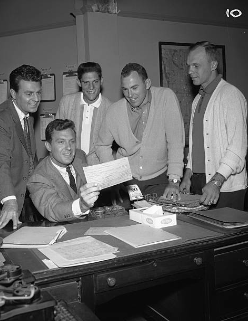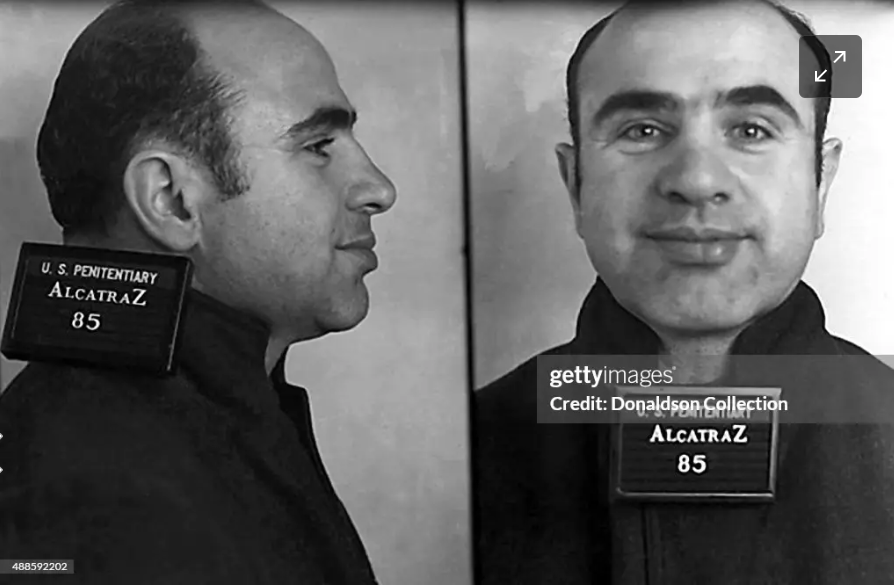November 30, 2023
Unmasking the Untouchable: Eliot Ness and the Triumph Over Al Capone’s Criminal Dynasty

Eliot Ness, a young, unknown man out of Chicago, Illinois was soon to be the best-known prohibition agent in the United States. Could you imagine being assigned the case of catching the most famous criminal in the country at the age of twenty-eight years old? Ness was described as “cunning, idealistic, and bold.”1 Ness was handpicked by Chicago district attorney George Johnson. Johnson chose Ness at such a young age because his target, Al Capone, was protected by corruption. Johnson had to pick someone who could not possibly have been in contact with Capone or his men, someone who had no possibility of being bribed by Capone and his funds. By the second half of 1927, Capone had absolutely taken control over the city of Chicago. Capone had bought out a big portion of the police force to give him insider information, as well as paying his servants who worked for him as their primary job. Capone’s resources in Chicago seemed to be unlimited. It was rare that anything happened without Capone hearing about it. Professor Douglas O. Linder has written of this, “With the city’s new mayor, Big Bill Thompson, in his pocket, Capone carried out his illegal bootlegging, racketeering, and gambling businesses with virtual impunity. His enforcers carried officially stamped cards issued by the city that read: ‘To the Police Department–you will extend the courtesies of this department to the bearer.’”2
Ness used the same logic as Johnson to handpick the rest of his team of men who fit that same profile of being young, honest, and free of commitment. Johnson liked Ness’s thinking, allowing him to have complete control, letting Ness only have to report to Johnson himself. Ness looked for newbies; he took no risks and found people who could not possibly have been connected to the mafia to interview for roles on his crack team. George Richards mentions the main members of the Untouchables in his article, “Frank Basile, a former bootlegger with first-hand knowledge of the process of making and distributing illegal liquor, served as chauffeur for the group. Due to his ability to speak Italian, Basile helped to interpret some of the dialogue the group heard from suspects… Michael King, a disguise artist, was known for his ability to tail a suspect. Paul W. Robsky was a wiretap specialist. Samuel M. Seager was a former death row guard at Sing Sing Prison with a reputation for knowing how to deal with criminals considered especially dangerous.”3
Ness and his team’s first target were the speakeasies, due to the abundance of liquor served every night, most likely supplied by Capone. They most likely were not going to find evidence on Capone there, but if they could bust the violations of prohibition, it could substantially disrupt Capone’s operations. Ness’s detectives kept an eye on the more suspicious bars and decided to catch the first bar they raided by surprise. They barged into one of the more notorious clandestine bars in Chicago. The team went in without a warrant to try and cut off any possibility of word getting out that they were going to raid the place. But as soon as they entered, word was quickly relayed to the workers of Ness’s presence. While Ness and his team were arresting the customers upstairs under the assumption they were violating prohibition laws, the workers quickly disposed of all traces of alcohol downstairs where it was being served. Because all the bottles were destroyed before the team made it downstairs, they were required to release all customers they had arrested. Ness had lost his first battle in his war against Capone. However, the most important part of this interaction was that Ness had gained wisdom from his first attempt to find evidence to put away Capone.4
Ness’s next plan was to track the deliveries from the bars to the clandestine distilleries. Ness stuck late at night one night in hopes of catching a van leaving the bars. Around roughly two o’clock in the morning, a van left the premises and Ness and his men tailed it to its destination. The operation seemed almost too easy; the team was nearly drooling at the hopes of a successful mission. Ness had even invited the press along to film and take note of his victory. But once again, Ness had made a mistake. Before the barrels could be refilled with liquor, they had to be rinsed. So when Ness and his men opened the barrels, all they found was water. Historian Rhona Dumonthier-Finch had this to say about the failed mission, “Ness became the laughing stock of his adversaries and he knew that he could not afford to make another mistake.”5

On March 17, 1930, Capone was released after being imprisoned for nine months for possession of a deadly weapon. Capone was supposed to be imprisoned for a year but was let out early on good conduct. When he was released, he had heard of Ness and his team’s operations to disturb his illegal business. To further embarrass Ness and his team, Capone decided to turn himself in to the police as soon as he was released, but was released once again after 48 hours because there was no evidence that could be placed against him. Capone was winning again and again in the face of the media, while Ness was becoming a clown in the press. And it did not help that Capone paid some important reporters’ salaries, influencing them to help Capone look even greater than he might have been. In response to this, Ness and his team lengthened their efforts, working overtime. Calls came in around the clock, but it was hard to decipher whether or not they were true calls or Capone’s minions calling in and giving false information. However, Ness had had enough of the failure. Ness would soon hit the jackpot. Through the use of a phone tap, Ness and his men were able to track a delivery van that was full of casks all the way back to the wash unit. To not make the same error as last time, they made sure to track the vans with the rinsed barrels. When the team busted open the van, they found a huge amount of bottles and barrels full of alcohol, which were all destroyed by Ness and his men. And before Ness called out the press once again, he made sure to put Capone’s men in handcuffs. With thousands of dollars going to waste, it was the first victory for Ness in his battle against the crime lord in court and in the media.6
However, this first victory for Ness infuriated Capone. Capone told his men to take out Ness and any of his men if given the chance. This response from Capone caused crime rates to skyrocket, with arrests and assassinations happening nearly every day. But Ness and his team remained strong and put up a resistance towards Capone that the city of Chicago had never seen. After the violence in the city settled down, Capone came up with another strategy in hopes of stopping Ness’s men. Capone offered a sum of $2,000 to anyone on Ness’s team willing to comply with Capone and his illegal intentions. After all of Ness’s men refused this bribe, they reported it to their leader and it gave him an idea. Ness made the decision to leak this news to the press in order to embarrass Capone, showing his signs of weakness to the public. The media could not get enough of this story, as, for the first time, it seemed that someone was making a dent in Capone’s empire of crime. As the year 1930 was coming to an end, all people would see in the news was Capone’s sorry attempt at turning Ness and his team towards his side. After this event, they were now known as “The Untouchables.” Richards gave an explanation as to why they were given the nickname, “This sobriquet was meant to emphasize that Ness and his men were incorruptible by criminal elements.”7 Because of this new momentum, the Untouchables were funded and given an up-to-date ballistics department full of experts with experience in the field.

But Capone wanted to turn the tables on Ness, and he began to target him in other ways. Ness became the main concern of Capone as he was constantly bugged and followed around the clock. Capone and his men lengthened their efforts by not just messing with Ness and his men, but starting to focus on Ness’s family as well. They started to mess with Ness’s personal life, especially with his wife Edna. She had to be accompanied by two bodyguards at all times. She was a prisoner in her own home and she got lonely, never being able to see her husband and never knowing when or whether he would return home that night. Their relationship began to have trouble, but Ness never wavered as he was so invested in his case with Capone, that he was willing to do anything to catch the crime lord. If possible, Ness became even more committed, as the president of the United States told him that the country was counting on him to catch Capone and rid the windy city of its reputation as the crime capital of the country.
However, Capone had other plans. On a dreary night in March, the Untouchables’ driver, Frank Basile, was found dead, his body mutilated, his skull smashed, and his tongue ripped out. This was an intentional message sent by Capone warning Ness to back off for the last time. Basile was not known by many others besides the crew working on the case. This was a sad loss for the group as they all had trusted them with their lives. This action of violence by Capone’s men caused Ness to worry for the safety of his wife, as the amount of protection she had was increased even more. Besides Ness’s worry for his wife, this assassination by Capone’s men only strengthened the team’s grit and determination to bring down Capone. Ness’s newest idea was to use the media as the place of battle against Capone. The thought was to paint Capone to the media as the criminal he truly was and hope the reporters who were not corrupted by Capone would report the truth. To do this, Ness came up with a plan. It would both infuriate Capone while also giving way to a little bit of vengeance for the murder of their friend, Basile. Ness gathered all the vehicles of Capone’s that were confiscated by Ness’s team since the start of the investigation. Before the plan was about to be executed, Ness once again invited the press along to witness his great triumph and embarrassment of Capone. That night, Ness called up Capone and told him to look out his window towards the street at eleven p.m. Author George Richards explains what Ness had planned: “the Untouchables had confiscated 45 Capone organization trucks… Ness had all 45 trucks washed and waxed. After ordering them to be driven in a convoy, he arranged for police cars to be interspersed between the vehicles to avoid hijacking. The convoy moved at a slow pace along the route Ness selected to the sales site. The trucks crept along Michigan Avenue and passed by the Lexington Hotel where Capone resided. Just prior to the trucks leaving, Ness called Capone and asked that he look out his hotel room window”8 While this greatly angered Capone, Ness and his team were now on a roll and had won multiple consecutive victories with the media as it seemed the tides were turning in his favor.
After this interaction, Capone had a man watching Ness and his team day and night. Ness told his crew members that he felt like he was being stalked by a seemingly permanent danger. He never stayed still, and never spent two nights in a row in the same place. He was always moving at night, but never without a bodyguard. And this movement was not helping him as he was already working on a case during the day. With damaged pride from Ness’s parade stunt, Capone was persistent in taunting the Untouchables, reminding them again and again that they had zero charges to press against him. However, that was going to change very soon. While all this back and forth was going on between Capone and Ness and his team, a man by the name of Frank J. Wilson was taking a different approach to finding evidence in hopes of bringing in Capone. Wilson was an accountant and agent belonging to the Internal Revenue Service (IRS), who was given the task of looking into Capone’s financial records, especially into deals with his “business” acquaintances. But it was much harder to find dirt on Capone and his partners than Wilson and his team had hoped due to Capone’s reluctance to give out any information. Nor did it help that Capone paid his moles well enough for them to give little to no information at all. But after Wilson and his associates investigated Capone for nearly three years, he finally found something through the use of forensic accounting, the combination of accounting and investigative techniques used to discover financial crimes. Larry Crumbley and Nicholas Apostolou provided the story of Wilson finding the evidence of tax evasion, writing, “Finally one night, around 1:00 a.m., Wilson himself found three bound ledgers that seemed to be financial records of an enormous gambling operation. Every few pages showed a calculation of net income that was to be divided among three people, referred to only as A, R, and J. On some pages there were references to ‘Al.’ On one page, there was this notation: ‘Frank paid $17,500 for Al.’ This was the first shred of evidence that Wilson had which might link Capone to proceeds of a gambling operation.”9
From then on, the evidence could not have been more straightforward, as Ness and his team finally had the means and evidence to bring in Capone. Capone was warned of them finding out this information and immediately panicked. He made multiple orders to his men to create violence and commit crimes all in hopes of distracting Ness and buying himself time. But none of the distractions Capone had sent out were enough to draw the Untouchables away from their main goal of bringing down Public Enemy Number One. In spite of Capone’s efforts, he was caught. On October 5, 1931 Capone came into court while surrounded by the press and citizens of Chicago. He showed up without any of his acquaintances as they all abandoned him when hearing news of charges being brought against their leader. The trial was one-sided and moved swiftly due to most of the evidence already being on the table. As the trial was heading towards its end, Capone and his lawyers had one last trick up their sleeve. The defense decided to summon one last witness, a man by the name of Richard Hart. Defense attorneys believed that this man’s word could change the outcome of Capone’s sentence. Deirdre Marie Capone gave this background for Hart, “Prohibition agent, using clever disguises and a knack for investigation to uncover illegal bootlegging operations. He led countless raids and was the subject of local headlines throughout Nebraska. Eventually, his successes earned him the nickname “Two Gun” Hart”10 Hart also served in World War I and even served as a bodyguard for President Calvin Coolidge when he took a vacation in the Black Hills of South Dakota. But, there is something most people did not know about Richard Hart. Hart’s previous name was Vincenzo Capone and he was Alphonse Capone’s older brother. When they were younger, Vincenzo was upset with his younger brother Alphonse and with the path that he was taking. Due to this, Vincenzo grew tired of the impoverished city life and decided to leave unannounced. The only time in the last forty years that the brothers had seen each other was at their father’s funeral. Vincenzo was reluctant to ever see Alphonse again as he had still not forgiven him for their constant disagreements throughout their youth. And, it appeared that Vincenzo didn’t even show up when he was called to the stand. More and more evidence continued to stack up against Capone as more workers of Capone came forward with the truth, and without Capone’s brother to defend him, the defense had no evidence left to help their client. With all of these factors, the trial came to a conclusion.

Capone was found guilty and sentenced to eleven years in prison for tax evasion. “’The Chicago Tribune’ of May 4, 1932, lists Ness among the lawmen who took Capone to the train that would carry him to federal prison. A photo from that same newspaper shows the two nemeses walking within feet of each other in their only direct face-to-face encounter, at the very end of Capone’s criminal career.”11 It is rumored that Capone told Ness, “Without me, your life is ruined.”12 Whereas Ness just looked at him and smirked as he now knew he had won his war with the infamous Al Capone. There were multiple cars accompanying Capone and Ness in order to prevent any attempt at escape. Ness was picked by District Attorney George Johnson to accompany Capone to emphasize further that good will always prevail over evil. When arriving at the station, Capone walked out after Ness proudly posed like a man who had no shame. Capone boarded the plane in one of his signature dark purple suits, and standing in front of the crowd of media was Eliot Ness with a smile on his face, enjoying his moment of victory.
- Patrick Jeudy, How Eliot Ness Took Down Al Capone | American Mobster Full Documentary, Youtube Video, vol. 1, 1 vols., The Documentary Collection (Little Dot Studios, 2022), 18:48. ↵
- Douglas Linder, Al Capone Trial (1931): An Account (Famous Trials, 2017), para. 3. ↵
- George Richards, “The Last Boy Scout: Eliot Ness’ Tenuer as Cleveland, Ohio’s Public Safety Director,” International Journal of Humanities and Social Science Vol. 1, 12 (2011), 15-16. ↵
- Patrick Jeudy, How Eliot Ness Took Down Al Capone | American Mobster Full Documentary, Youtube Video, vol. 1, 1 vols., The Documentary Collection (Little Dot Studios, 2022), 20:30. ↵
- Patrick Jeudy, How Eliot Ness Took Down Al Capone | American Mobster Full Documentary, Youtube Video, vol. 1, 1 vols., The Documentary Collection (Little Dot Studios, 2022), 23:05. ↵
- Patrick Jeudy, How Eliot Ness Took Down Al Capone | American Mobster Full Documentary, Youtube Video, vol. 1, 1 vols., The Documentary Collection (Little Dot Studios, 2022), 23:20. ↵
- George E Richards, “The Last Boy Scout: Eliot Ness’ Tenure as Cleveland, Ohio’s Public Safety Director,” International Journal of Humanities and Social Science 1, no. 12 (2011), 16. ↵
- George E Richards, “The Last Boy Scout: Eliot Ness’ Tenure as Cleveland, Ohio’s Public Safety Director,” International Journal of Humanities and Social Science 1, no. 12 (2011), 16. ↵
- Larry Crumbley and Nicholas Apostolou, “America’s First (and Most Fearless) High-profile Forensic Accountant,” American Board of Forensic Accounting (website), 2007), 2, https://abfa.us/wp-content/uploads/2022/07/Americas-First-2.5.18-site.pdf. ↵
- Capone, Deirdre Marie, Uncle Al Capone: The Untold Story from Inside His Family (Recaplodge LLC, 2010), 22. ↵
- Max Allan Collins and A. Brad Schwartz, “Eliot Ness and Al Capone – 10 Surprising Facts,” Strand Magazine (website), https://strandmag.com/10-surprising-facts-about-al-capone-and-eliot-ness/. ↵
- Patrick Jeudy, How Eliot Ness Took Down Al Capone | American Mobster Full Documentary, Youtube Video, vol. 1, 1 vols., The Documentary Collection (Little Dot Studios, 2022), 43:15. ↵
Tags from the story
Al Capone
Elliot Ness
organized crime
Prohibition
The Untouchables
Mason Anania
This is a very strong essay. I never thought I would be so interested in the story of Eliot Ness and Al Capone, nor did I think that it would be so interesting. This was a fantastic read!!
30/11/2023
7:05 am